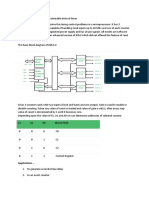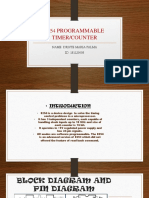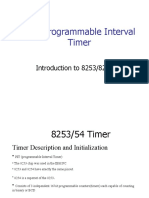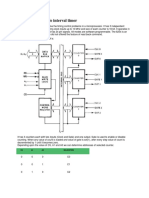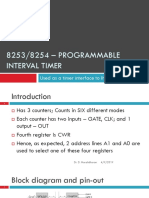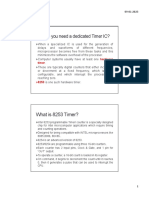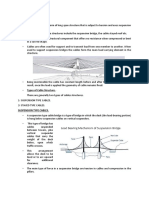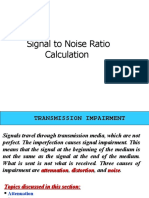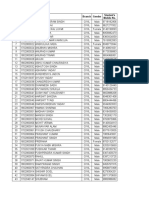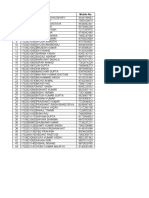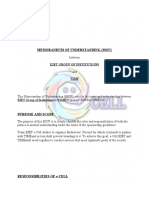0% found this document useful (0 votes)
32 views1 pageMicroprocessor: Surya Prakash Pandey 1702921128
The document describes the 6 operating modes of the 8254 microprocessor timer/counter chip. Mode 0 is for event counting and generates an interrupt when the counter reaches zero. Mode 1 generates a one-shot pulse triggered by an external signal. Mode 2 acts as a frequency divider where the output frequency is the input frequency divided by the count value. Mode 3 generates a square wave where the on and off times are determined by the count value. Mode 4 is triggered software to toggle the output at the end of counting. Mode 5 is triggered by an external signal to toggle the output after the count expires.
Uploaded by
Surya Prakash PandeyCopyright
© © All Rights Reserved
We take content rights seriously. If you suspect this is your content, claim it here.
Available Formats
Download as DOCX, PDF, TXT or read online on Scribd
0% found this document useful (0 votes)
32 views1 pageMicroprocessor: Surya Prakash Pandey 1702921128
The document describes the 6 operating modes of the 8254 microprocessor timer/counter chip. Mode 0 is for event counting and generates an interrupt when the counter reaches zero. Mode 1 generates a one-shot pulse triggered by an external signal. Mode 2 acts as a frequency divider where the output frequency is the input frequency divided by the count value. Mode 3 generates a square wave where the on and off times are determined by the count value. Mode 4 is triggered software to toggle the output at the end of counting. Mode 5 is triggered by an external signal to toggle the output after the count expires.
Uploaded by
Surya Prakash PandeyCopyright
© © All Rights Reserved
We take content rights seriously. If you suspect this is your content, claim it here.
Available Formats
Download as DOCX, PDF, TXT or read online on Scribd
/ 1
